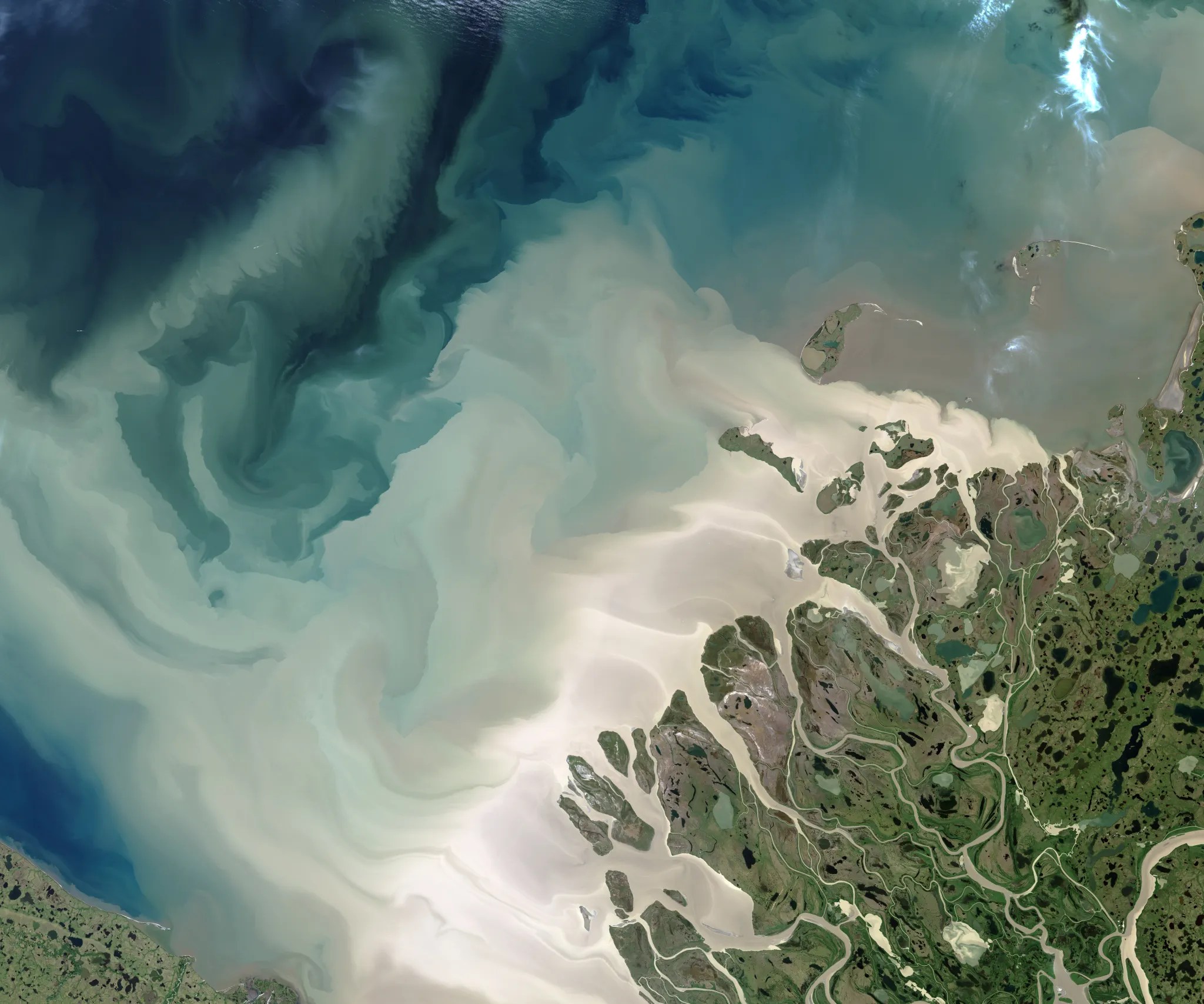The Arctic Ocean may be ground zero for climate change. According to a study published in Geophysical Research Letters, runoff from the Mackenzie River in Canada is causing the ocean to release more carbon than it releases, and as the ocean warms, the Arctic carbon emissions will only continue to rise.
Scientists estimate that the Arctic absorbs as much as 180 million metric tons of carbon annually. This is more than three times the carbon that New York City emits. As such, the Arctic is one of the most important carbon sinks on our planet, and if it starts working against us, then climate change could spiral out of control quickly.
To understand exactly why the Arctic is struggling, the researchers involved in the study looked at the connection between the small, cold ocean and the runoff from Canada’s carbon-rich Mackenzie River. The river flows into a region of the Arctic Ocean called the Beaufort Sea, and images captured of the area the two meet have showcased milky swirls in the water.

This milky discharge, the researchers say, is due to the high levels of carbon and sediment that is trapped within the Mackenzie River. And when it mixes with the Arctic, it’s slowly warming it, causing more permafrost to thaw, which raises Arctic carbon emissions. The researchers used simulations to get a better idea of how these two bodies of water are interacting.
According to those simulations, the river is triggering an intense outgassing in the southeastern Beaufort Sea, essentially tipping the scales of carbon balance. This means that the sea is now releasing a net amount of CO2 estimated to be around 0.13 metric tons per year, roughly the same as the annual emissions from 28,000 gasoline-driven cars.
Of course, the Arctic carbon emissions do vary by season, but they’re much more pronounced during the warmer months when the river’s discharge is higher. This, the scientists say, paints a clear connection between the two and shows why it is important to find ways to keep the ocean temperatures from rising any further.
Unfortunately, nobody has come up with an approved plan to combat climate change, yet. However, certain groups are pushing for the construction of an orbiting sunshade to help ward off solar radiation and decrease global temperatures. And if the forests in the US stop absorbing carbon within the next 50 years, as some predict, we could be in trouble.








